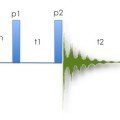Welcome to Nanalysis’ benchtop NMR Blog
We love benchtop NMR! In this blog section, you will find all things benchtop NMR. Please contact us if you would like to discuss about your project.
Category
NMR Topics
- 100 MHz NMR
- 13C NMR
- 19F NMR
- 19F NMR Spectroscopy
- 31P NMR
- 3H NMR
- Agrochemicals
- Applications
- Biopolymers
- Botanicals
- COSY
- CPMG
- Cannabis
- Chemical Analysis
- Cosmetics
- DEPT
- Drug Analysis
- Edible Oils
- Educational NMR
- Energy
- Exchangeable Protons
- Exchangeable protons
- Flavor and Fragrances
- Flow NMR
- Fluorine-19 NMR
- Food Science
- Food and Beverage
- Forensics
- Forestry
- HMBC
- HSQC
- Hands-on Learning
- Hydroxyl value
- Hyphenated NMR
- Illicit Drugs
- Industrial Applications
- Interpretation of NMR
- Interpretation of NMR Spectra
- Inversion-Recovery
- Keto-Enol Tautomerism
- LF vs. HF NMR
- Lignin Analysis
- Literature
- Literature using Nanalysis benchtop NMR
- Mining
- NMR Applications
- NMR Instrumentation
- NMR Labelling
- NMR Pulse Programs
- NMR Signal Processing
To D2O or not to D2O?
In the average case one can simply dissolve an analyte in an appropriate deuterated solvent and acquire a simple 1D spectrum to obtain all the required structural information. However, sometimes doing so may not provide you with all of the information you need!
'Hop' off the Diagonal: COSY spectrum of α-humulene
NMR spectroscopy is by far the most useful characterization technique in organic chemistry, especially if you have to elucidate the structure or configuration of your products. Arguably, 2D experiments such as COSY, HSQC, and HMBC have simplified this task tremendously. In this post I wanted to highlight the COSY of α-humulene. Read more.
What to expect: Chemical Shifts & Coupling Constants in Low-field NMR Spectroscopy
One of the questions that we always get at tradeshows and conferences is how our instrument compares to high-field data. There are significant inherent differences between low-field and high-field instruments, but the most important from a chemistry point of view are sensitivity (S/N) and resonance dispersion (signal separation). Read More.
Process-NMR – Future key elements in the world of Process Analytical Technology (PAT)
What is process analytical technology (PAT) and why is it so important?PAT is an extremely powerful and useful tool for analyzing, optimizing and controlling chemical processes. Chemical, food and pharmaceutical industries could especially benefit from this technique. In earlier days, chemical processes were primarily monitored by physical techniques, such as temperature, pH, pressure etc..
The Dangers of Making Too Many Assumptions. Electronegativity, Acidity, and Chemical Shift
Last month (which you can see here), we learned about how an acidic proton behaves in a 1H NMR experiment, particularly when it’s surrounded by D2O. For example, when an H+ leaves CH3COOH to join an accommodating D2O molecule, the resulting acetate (H3CCOO–) segment is reasonably comfortable bearing that negative charge. This phenomenon is the reason the solution is “acidic” in the first place. But why is acetate so capable of dealing with this negative electronic charge?
DEPT: A tool for 13C peak assignments
Distortionless Enhancement by Polarization Transfer (DEPT) is a double resonance pulse program that transfers polarization from an excited nucleus to another – most commonly 1H → 13C. This results in a sensitivity enhancement relative to the standard decoupled 1D carbon spectra (13C), which benefits only from the small Nuclear Overhauser Effect (NOE) enhancements.
Teeter-Tautomers
2,4-pentanedione (aka acetylacetone, acetylacetonato or acacH) is not only a ubiquitous ligand (AND ligand precursor!) for beautifully coloured organometallic complexes[1-3].. Read more.
Settle in and get COSY!
In November 2014 Nanalysis was pleased to announce the expansion of their product line with the NMReady-60PRO. With this we also extended our experiment library for the NMReady-60e
Monitoring the Preparation of Biodiesel with Benchtop NMR
Sustainability has become a main focus of innovation. Topics of green chemistry, and renewable feedstocks, are paramount in society today. Biodiesel is one such example! Read more.
Undergraduate Experiment: Instrumental Analysis of Spectrometers
Learning about the parameters that are vital for obtaining good spectra – a concept that I had learned about in a theoretical sense, but as a synthetic chemist rarely thought about when collecting routine data.











